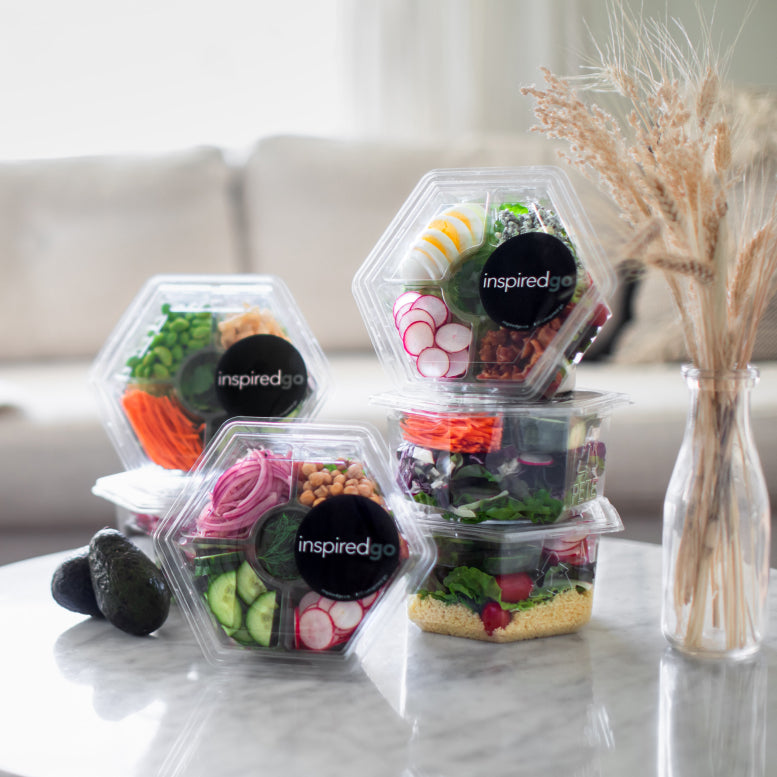How Many Calories Are In A Salad?
Table of Contents
1. Understanding Calorie Content in Salads
2. Is Salad Good for You?
3. Is Caesar Salad Healthy for You?
4. What Is a Healthy Dressing for a Salad?
1. Understanding Calorie Content in Salads
If you're trying to maintain a balanced diet, knowing the calorie content of your meals is essential. Salads can vary greatly in their calorie content, depending on the ingredients used. A simple garden salad with lots of greens and minimal dressing can be as low as 100-150 calories. However, when you add elements such as cheese, nuts, dried fruits, croutons, or creamy dressings, the calorie count can significantly increase, sometimes even exceeding 500 calories. It's important to note that not all calories are equal. A salad packed with nutritious ingredients such as avocados, nuts, and olive oil might be higher in calories, but it also contains beneficial fats and other nutrients. For specific calorie details on a wide array of fresh, nutritious, ready-to-eat meals, explore the Nutrition Information section on our website.
Order fresh salads today →


2. Is Salad Good for You?
Salads are among the healthiest meal choices, offering a wide variety of essential nutrients in every bite. Packed with leafy greens, colorful vegetables, lean proteins, and healthy fats, salads provide vitamins, minerals, and antioxidants crucial for overall health. They are naturally high in fiber, which supports digestion and promotes feelings of fullness, reducing the likelihood of overeating. Salads can also be customized to include protein-rich ingredients like grilled chicken, chickpeas, or tofu, making them balanced and satisfying. Dressing choices play a significant role in salad healthiness, with olive oil-based or yogurt-based dressings offering healthier alternatives. Salad delivery services simplify incorporating these nutritious meals into daily life, ensuring consistent access to fresh, wholesome ingredients without extensive preparation.
Choose your salads and schedule delivery →
3. Is Caesar Salad Healthy for You?
Caesar salads are a classic favorite, combining crisp romaine lettuce, Parmesan cheese, croutons, and Caesar dressing. While delicious, traditional Caesar salads can be high in calories, especially when loaded with creamy dressing and fried croutons. Opting for grilled chicken instead of fried toppings and choosing a lighter dressing can make Caesar salads a healthier choice. Salad delivery services often provide customizable Caesar salad options, allowing customers to adjust portion sizes and select lower-calorie ingredients. These services also share nutritional details, making it easier for customers to monitor their calorie intake. With mindful ingredient choices, Caesar salads can be a satisfying and nutritious meal option.
Get fresh salads and snacks delivered →
4. What Is a Healthy Dressing for a Salad?
Inspired Go recognizes that salad dressings play a significant role in determining the health value of a salad. While creamy dressings can often add excess calories and unhealthy fats, Inspired Go offers a variety of lighter alternatives, including vinaigrettes made with olive oil, citrus blends, and yogurt-based dressings. These options enhance flavor without overshadowing the natural taste of fresh greens and toppings. Each dressing is carefully portioned to ensure balance, preventing salads from becoming overly calorie-dense. Inspired Go also provides clear nutritional information for all dressings, allowing customers to make informed choices based on their dietary needs. By prioritizing clean, high-quality ingredients in their dressings, Inspired Go ensures that every salad remains a wholesome and satisfying meal option.
Try our fresh, ready-to-eat salads →
Frequently Asked Questions
The most nutritious salad greens are dark leafy varieties like spinach, kale, and arugula. These greens are packed with essential vitamins, including A, C, and K, as well as minerals like calcium and iron. Kale is particularly rich in antioxidants, while spinach offers significant amounts of folate and magnesium. Choosing a mix of dark greens enhances both the flavor and nutritional value of your salad.
A healthy salad includes a balance of nutrient-dense ingredients like leafy greens, fresh vegetables, lean proteins, and healthy fats. For example, a base of spinach and kale, paired with grilled chicken, cherry tomatoes, avocado, and a light olive oil dressing, creates a wholesome meal. Avoid fried toppings or sugary dressings, as they add empty calories, and opt for natural ingredients to maximize nutrition.
Yes, eating salad daily is a healthy habit when it includes a variety of fresh, nutrient-rich ingredients. Salads offer fiber for digestion, antioxidants for immunity, and essential nutrients like potassium and folate. Regularly eating salads can support weight management and improve energy levels. To avoid monotony, vary your greens, proteins, and toppings to keep meals satisfying and nutritionally balanced.
Healthy salad dressings are typically made with simple, natural ingredients. Olive oil-based dressings, paired with balsamic vinegar or fresh lemon juice, provide healthy fats and enhance flavor without unnecessary calories. Avoid store-bought dressings with high sugar or preservatives. For a creamy alternative, opt for homemade dressings using Greek yogurt or avocado for added nutritional benefits.
Yes, salads are incredibly beneficial for overall health when prepared with fresh, whole ingredients. They are low in calories and high in vitamins, minerals, and antioxidants, supporting heart health, digestion, and immunity. Adding a mix of proteins and healthy fats creates a satisfying, nutrient-dense meal. Regularly incorporating salads into your diet can promote long-term well-being and energy.

